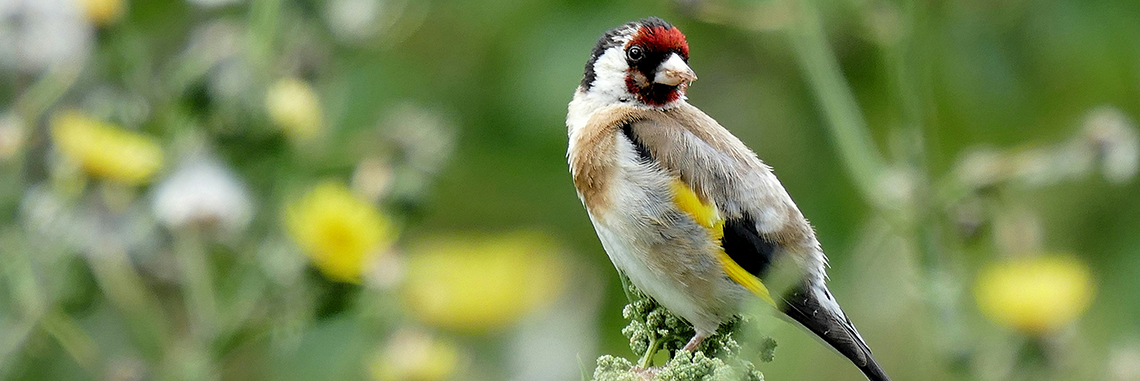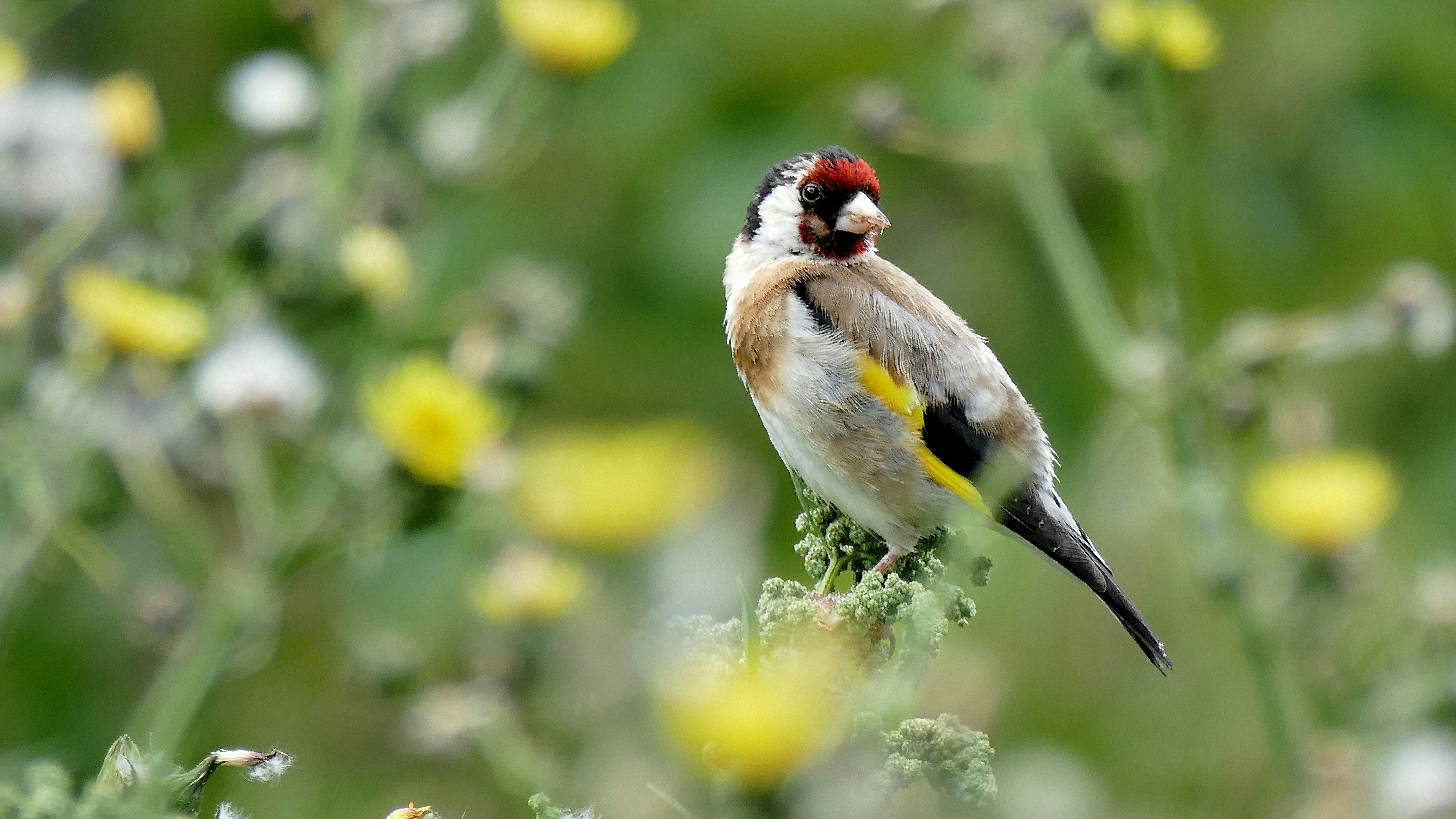Goldfinches Fill the Fields with Colour and Song

By Jose Luis Gallego, environmental communicator (@ecogallego)
With the arrival of spring, nature is literally engulfed in a joyful cacophony. From croaking frogs and chirping crickets to singing birds and humming insects, the air is so full of calls and echoes that few moments of silence remain. Among the star soloists of this spring soundtrack is none other than the goldfinch, one of the most beautiful birds to inhabit our fields, known for its distinctive flute-like melody.
About the size of a sparrow – which belongs to the same family of Fringillidae, along with the greenfinch, linnet, and other finches – our protagonist is also known as the colorín in Spanish because of its elegant, colourful plumage.
The chest and lower abdomen of the goldfinch are a toasty cream colour whereas the back is golden brown. The face is a bright, deep red that encircles a stout pink bill. The black-spectacled eyes blend into the black crown and nape, contrasting the pure white cheeks. The wings feature a striking combination of black and yellow, which becomes very apparent in flight and makes identifying goldfinches easy.

A goldfinch perched on a branch in a field
Although goldfinches frequent pinewoods, oak groves, and other open woodlands, they prefer mosaic landscapes, the edges of paths, and farmland, and they are often seen in orchards, olive groves, meadows, and vineyards. They are also a common sight in city parks and gardens. Goldfinches are a granivorous species, meaning they feed on a variety of seeds, although they are particularly fond of cardoon seeds, hence their scientific name Carduelis carduelis.
A gregarious and social bird, the goldfinch seeks out company, either of its own kind or other Fringillidae. During this time of year, we can easily spot goldfinches as they fly over the fields, singing their lovely flute-like song, which they do even in mid-flight. They produce such a varied and beautiful melody that goldfinches are coveted by people who organize songbird contests and enjoy listening to them in captivity, condemning the birds to a life in tiny cages. This is especially cruel, because, when living in the wild, these migratory birds will often travel great distances every year.
Scientific ringing has shown that many of the goldfinches that populate our fields arrive from Finland, Russia, and other faraway places in Central Europe. As for the goldfinches that have their breeding range here, they tend to stay year-round. When autumn arrives, the winter migration of the birds fleeing the northern European cold can increase Spanish populations tenfold. At the same time, some Iberian goldfinches head to Africa to spend the winter amid the sedentary populations there.

Goldfinches in the countryside
In Spain, the breeding season lasts from mid-March until early August, producing up to three broods in particularly abundant years. The nests resemble small cups assembled from twigs, grasses, and sheep’s wool, which the birds gather in the fields. The nests are very well built, placed high in the treetops, and are often used for several years. The female incubates the eggs (up to six in a regular clutch) for about two weeks during which the male feeds and tends to her tirelessly. If everything goes smoothly, the chicks leave the nest after three weeks, making way for a new brood.
Although goldfinch populations are still relatively abundant, they regularly fall victim to bird-trapping, causing populations to decline in some traditional breeding grounds. According to SEO/Birdlife, an organization dedicated to the study and conservation of wild birds and their habitats, “the striking colourful plumage and varied song of the goldfinch are its undoing, making it the most pursued and trapped bird in Spain with thousands of individuals killed or caged every year”.
Furthermore, the NGO points out that goldfinches “are among the biggest victims of the indiscriminate use of pesticides and herbicides in the countryside”. Consequently, the spread of regenerative agriculture represents the greatest ally for this species, along with so many other birds that live in rural ecosystems.
